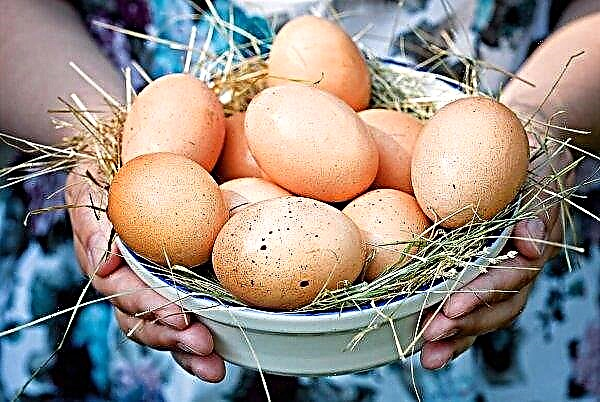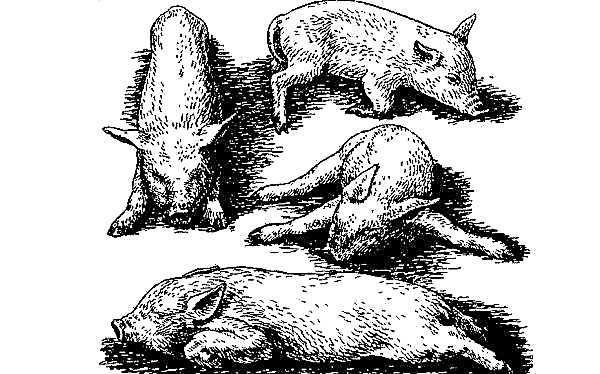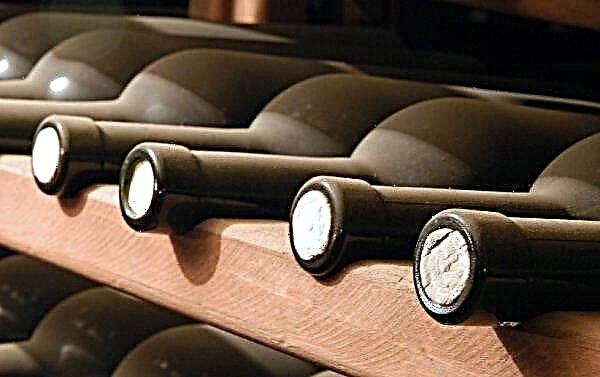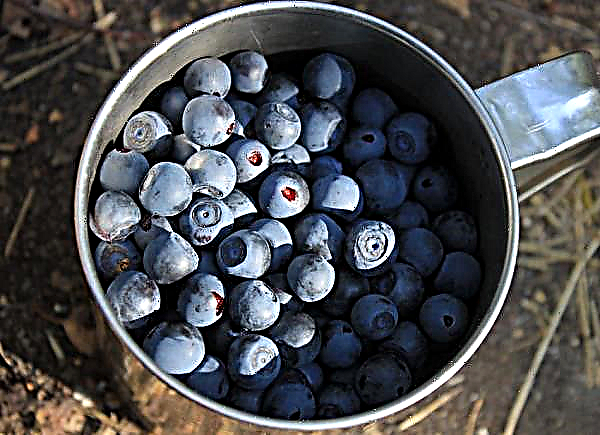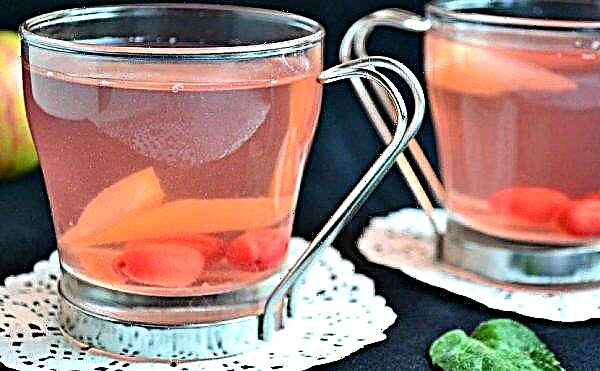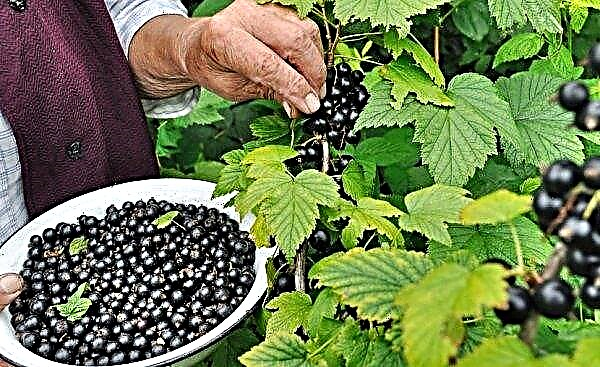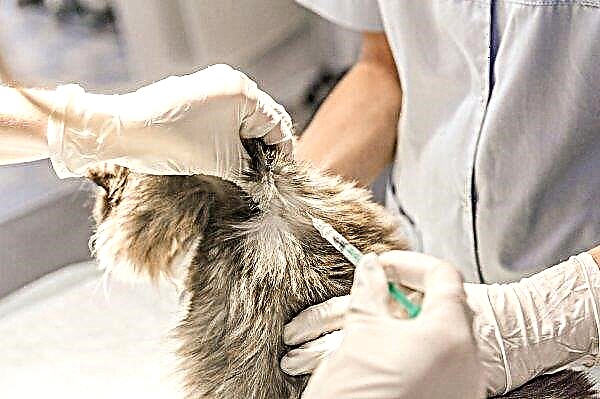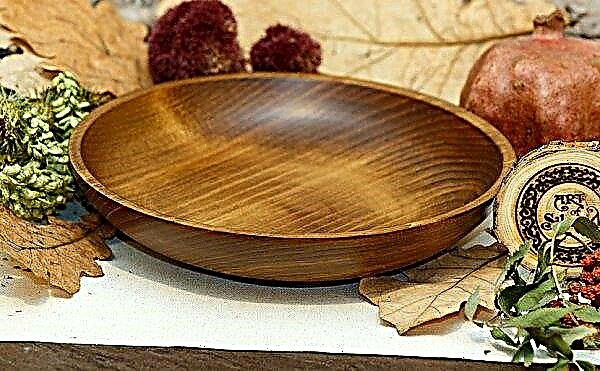The main condition for high productivity of laying hens is proper feeding. An unbalanced diet has a bad effect not only on egg production, but also on the general health and life expectancy of birds, therefore, the breeder should pay special attention to the quantity, quality and composition of feed. In this article, we will consider how and what to feed the chickens so that they rush well, and also we will analyze the detailed recommendations for compiling their diet.
Feed intake for laying hens
The norms and volumes of feed consumption by laying hens depend on the conditions of their maintenance. If chickens spend most of their time walking, then they give less food, since the birds partially get it themselves. When closed (chicken coops, cages, aviaries), greens, grass, fresh seasonal vegetables are added to the main feed.
On farms for rational feeding of chickens, special programs are compiled taking into account the stage of egg laying and the age of the livestock. The highest feed rate falls on the 27-28 week of the first year, when egg production reaches a peak. At this time, the bird needs a varied and complete feeding. Her diet consists of grain, preferably barley, boiled vegetables (carrots, pumpkins, herbs) and various additives in the form of yeast, bone meal, shells.
At this time, the bird needs a varied and complete feeding. Her diet consists of grain, preferably barley, boiled vegetables (carrots, pumpkins, herbs) and various additives in the form of yeast, bone meal, shells.
The diet of young chickens is slightly different from the diet of productive individuals. Shortly before oviposition, protein is gradually introduced into the youngsters' menu so that they carry large eggs with high palatability.
From the age of 49-50 weeks, feed norms are reduced, since egg production during this period is on the decline and the chicken no longer needs so many trace elements and vitamins.
Also, the norms change depending on the time of year. In summer, the daily requirement for cereals decreases by about 10 g, while the consumption of green feed increases by 20–25 g.
In winter, more root crops and vegetables are consumed. The norms for these feeds are 35 g more than in summer. The norms for mineral and vitamin supplements, salt, chalk, shell, practically do not change.
What and how to properly feed laying hens so that they rush better
Domestic chickens are omnivorous birds, but this does not mean that they can be fed anything. In order for the chickens to rush well and a lot, it is necessary to select and prepare food correctly, calculate their volume and adhere to the feeding regimen.
How to calculate feed portions
Excessive nutrition, as well as its lack, negatively affects productivity indicators, therefore it is very important to correctly calculate the portion size. All laying hens have different weights, due to the characteristics of the breed, and therefore, the volume of servings for them should be different. On large farms, servings are calculated based on the weight and productivity of the laying hen.
Important! Chickens are very fond of pecking grain, but its amount in the diet should be strictly dosed - no more than 1 feeding per day. Excessive grain intake leads to obesity and a drop in egg production.
For example, for chicken weighing 1.8–2 kg with an average productivity of 100 eggs per year, the daily feed rate is 125 g. For laying hens weighing more than 2 kg, portions are increased at the rate of 10 g of feed for every 200 g of weight. The productivity of an individual is also taken into account - for every 30 eggs, the volume increases by another 10 g.
Thus, a chicken weighing up to 2 kg, carrying 130 eggs, should receive 135 g of feed every day, with an egg production of 160 eggs - 145 g, divided in equal parts by the number of feedings.
What is included in the daily diet of chickens for the period of egg laying:
| Name of feed | Norm, g |
| Corn | 50 |
| Crushed Barley | 40 |
| Bran | 20 |
| Oilcake, Makukha | 10 |
| Milk and Derivative Products | 10 |
| Boiled root vegetables | 30 |
| Green feed | 50 |
| Dry protein feed | 15 |
| Fish flour | 10 |
| Inert flour | 2 |
| Chalk, shell | 5 |
| Yeast | 1 |
| Salt | 0,5. |
Egg production can be improved by increasing portions of boiled potatoes (up to 80–100 g), wet mash, grain and the introduction of special additives that increase productivity. But this is a temporary measure, since for a long time the bird cannot be on such a diet.
In addition, in the chicken coop should always be containers with chalk, shell, sand (these additives improve the digestion of feed), as well as clean water.
Composition and rules for the preparation of feed
The daily complete diet of laying hens includes 3 types of feed:
- dry
- combined;
- wet, preferably steamed.
 The daily norm of such feed is calculated based on the weight and actual productivity of the chicken, but for domestic laying hens it should not be more than half the diet.
The daily norm of such feed is calculated based on the weight and actual productivity of the chicken, but for domestic laying hens it should not be more than half the diet.Combined feeds are made up of different products. It can be the same compound feed, but not in its pure form, but with useful additives in the form of vegetables, cereals, bone meal, fish or meat components, protein supplements, fresh herbs.
Did you know? The color of the egg yolk depends on the quality and quantity of greens eaten by the layer: the juicier and better the grass, the brighterChristmas tree.
Wet food is a mixer that the poultry farmer prepares on his own. Their composition is different, but there are several products that make up the basis:
- cooked potatoes, chilled and mashed;
- root crops and vegetables ground on a grater;
- chopped greens, in winter - silage and grass meal;
- cereals and cereals - it is desirable to steam them with boiling water;
- wheat bran, barley bran, makukha, various meal, meal.
 An important addition to hand-made mixers are vitamin supplements, as well as calcium, which is necessary for the formation of eggs. Eggshells are crushed at the home compound for this purpose, however, it is most convenient to add ready-made premixes containing all the necessary components.
An important addition to hand-made mixers are vitamin supplements, as well as calcium, which is necessary for the formation of eggs. Eggshells are crushed at the home compound for this purpose, however, it is most convenient to add ready-made premixes containing all the necessary components.Frequency of Feeding
In the season when egg production reaches its maximum, it is recommended to feed chickens 3 times:
- first time after waking up - this feeding may include dry mixes and supplements of vitamins;
- in the afternoon give a wet steamed mash with the addition of greens, mineral additives, premixes;
- the last time 1–1.5 hours before going to bed or before turning off the lights - this meal can consist only of grain.
Important! A regular schedule and scheduled feeds increase productivity and have a positive effect on the ability of the livestock to lay eggs.
In some cases, feeding the layers can be two or four times a day. So, if the bird is on a walk from spring to autumn, it can be fed 2 times, while increasing portions due to nutritious and vitamin supplements. You can not add greens, since its chickens on a walk get in excess. Four meals a day are relevant for rushing young animals under the age of 48 weeks, as well as during colds in order to get more energy and prevent hypothermia.
Four meals a day are relevant for rushing young animals under the age of 48 weeks, as well as during colds in order to get more energy and prevent hypothermia.
During molting, hens also need larger portions, but during this period it is recommended to improve the diet due to mineral additives, especially sulfur.
Features of feeding in the winter
In winter, the feeding frequency of laying hens is increased up to 4 times, and feed rates are calculated according to this principle - the colder in the chicken coop, the better and more complete the food should be. If the room is well heated, you should take care of the constant access of chickens to clean water.
Important! Overeating is not allowed for laying hens. Do not overfeed the bird and always make sure that it does not accumulate fat if you are counting on high egg production.
The best food for the winter is compound feed supplemented with juicy vegetables: carrots, pumpkin, fodder beets. If chickens continue to be carried, potatoes must be present in the diet.
The second feeding may consist of a mash on the whey in a warm form. In the evening feeding, grain is added to the feed. It is digested for a long time, and due to this energy the birds warm at night. Since there is no fresh green in the winter, grass flour or a little silage is added to the mash. In the summer, you can prepare hay, which is then bundled and suspended - the birds peck at it themselves and find what they need. A good vitamin supplement for winter is sunflower poppy: it is steamed and added to the mash.
Since there is no fresh green in the winter, grass flour or a little silage is added to the mash. In the summer, you can prepare hay, which is then bundled and suspended - the birds peck at it themselves and find what they need. A good vitamin supplement for winter is sunflower poppy: it is steamed and added to the mash.
To improve the metabolism and maintain the egg production of birds, it is advisable to briefly let them out into the yard for walks. Closer to spring, it is worth starting to germinate grain - hens love it, in addition, it is a good source of vitamin E.
Did you know? For agriculture, especially for gardening, chickens are a considerable danger. Should the owner lose vigilance, birds on a paddock can destroy vegetation over large areas, destroy crops or dig holes directly in the garden to "swim" in them.
What can not be fed
Despite the omnivorousness of domestic chickens, there is a whole category of products that are unacceptable in their diet and can be harmful to health:
- Any spicy, salty, sour and fermented food. Stale food and waste from the table often cause intestinal infections, diarrhea, and goiter blockage.
- Raw potatoes and peeling from it. Potato peel is a rough food that upsets the digestion. Raw diets can also be caused by diarrhea.
- Fresh bread, especially white. In the stomach of chickens, fresh flour and yeast products swell, which can lead to death of birds. Bread can be added to the feed, but only dried and then soaked - provided that there is no mold on it.
- Fresh or salted fish. Occasionally, you can give fish, but only in boiled form. Fresh product is a source of bacteria and worms, in addition, large bones can carry a great danger to the life of chickens.
- Beetroot. Fresh, it causes diarrhea in birds. As an additive to the mixers it is better to use fodder beets and tops.
- Bitter plants and herbs: celandine, wormwood, ragweed, tomato tops.

Additional Causes of Low Laying Productivity
Even a carefully thought-out diet does not always guarantee good hen productivity. There are many more reasons and factors leading to a decrease in egg production:
- Molting. The body of a bird spends almost all nutrient reserves on updating its plumage, so there is simply no power left to produce eggs. Part of the problem is solved by improving the diet, but productivity still remains low.
- Lack of lighting. A daylight shorter than 15 hours leads to a decrease in the number of eggs.
- Changing the location of the laying nest is a big stress.
- Temperature difference in the chicken coop, prolonged cooling.
- Inadequate drinking regimen or stale water.
- The age of the birds. From the 50th week of life, the egg production of chickens is gradually declining.
- Features of the breed. Any chicken can carry eggs, but only specially bred egg breeds show high productivity.
Did you know? The egg production of chickens, as well as the productivity of people, largely depends on the mood. Scientists have noticed that quiet classical music contributes to an increase in the volume of demolished products.
Hens are the most popular birds in the homestead. They are unpretentious in content and not particularly demanding on feed, but if the purpose of their breeding is to get eggs, then much attention needs to be paid to the quality of feeding.
A varied and balanced feed is the basis of good productivity, so you need to correctly approach the feeding of laying hens from the first days of their life.


